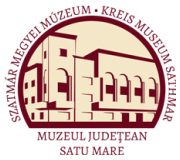Szőcs Péter Levente (szerk.): Călătorii istorice pe Valea Someşului. Ghid turistic (Satu Mare, 2014)
Culciu
part is specific to the Gáva culture. During the research of the site more the 50 bronze objects and moulding forms were discovered, indicating that there was a significant metallurgy in the settlement. On the basis of the sites researched at Culciu Mare - Zöldmező, Culciu Mare - Boghilaz, Culciu Mic - Völgyhát, the evolution of the human habitat can be traced during a later period: from the 2nd to the 5th centuries AD. During this period, the lowlands of the Someş River was inhabited by the Vandals and the communities of free Dacs. Each of these settlements functioned only for shorter periods, as far as it is known from the reduced scale researches. Unfortunately, there was not identified until now a central site with multiple phases in the area, which might reveal traces of industrial activities (sludge, shrinkage of pottery making, etc.), too. The site at Culciu Mic - Völgyhát dates back to the period following the Marcomanic wars of the 2nd century AD. It seems that the regional center at this time was at Medieşu Aurit - Şuculeu site, situated cca. 7 km to the North, across the river Someş, from where the pottery used at Culciu Mic site originated. The site at Culciu Mare - Boghilaz dates back to the 3rd century AD, the period of the transfer of Roman technologies from the Dacian province. The discoveries at this site, among them a silver fibula with filgranate ornaments of Straze-Sakrau type, constitute important chronological indicators. The site at Culciu Mare - Zöldmező dates to the end of the Roman Age, and the start of the migration period. The material culture identified here continues in main lines the previous traditions, while there were founds newer artefacts, characteristic to the migrations. Fibulă de argint, descoperită la Culciu Mare Nagykolcson feltárt eziistfibula Silver fibula, discovered at Culciu Mare Cărăşeu • Szamoskrassó Biserica ortodoxă Ortodox templom The Orthodox Church 65
